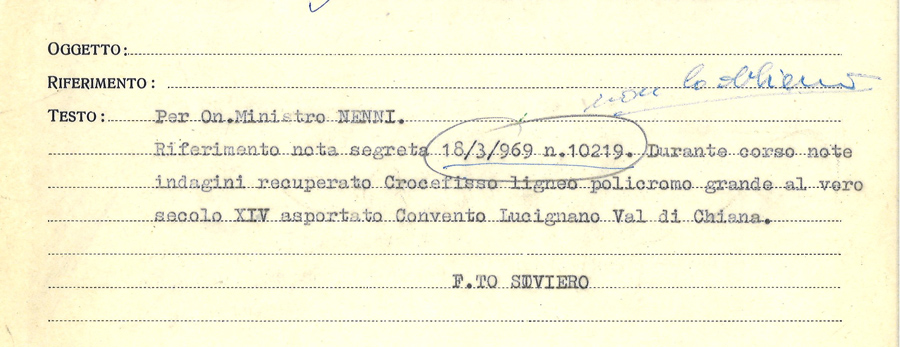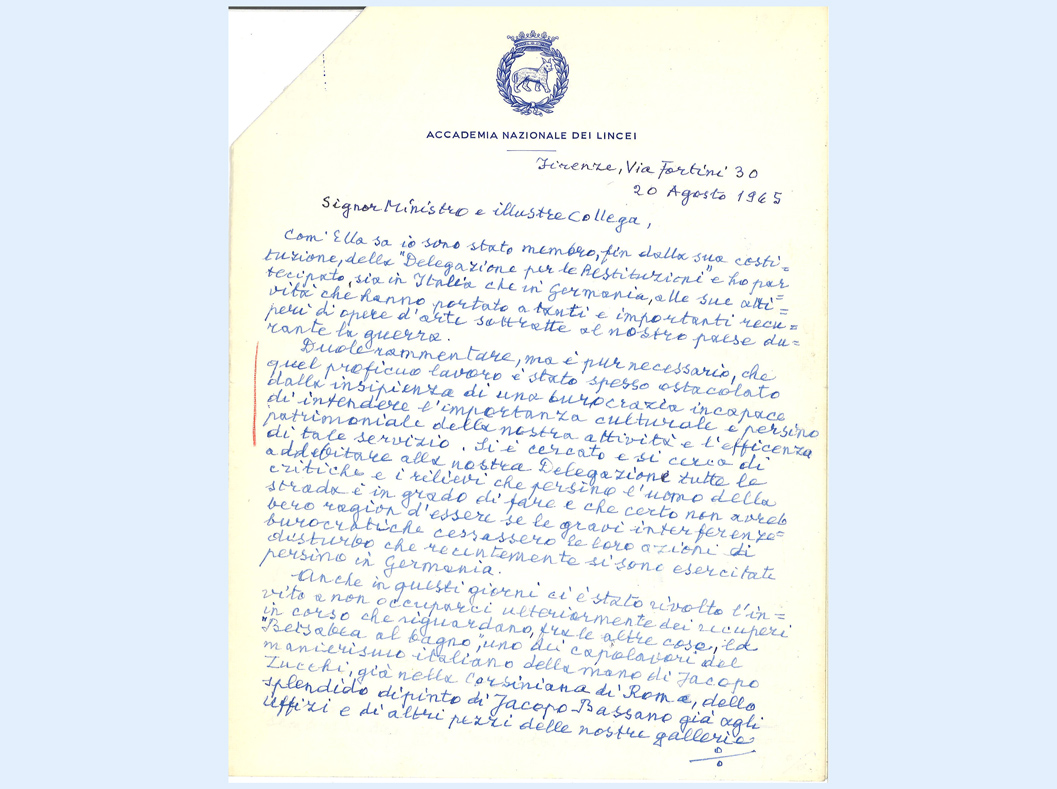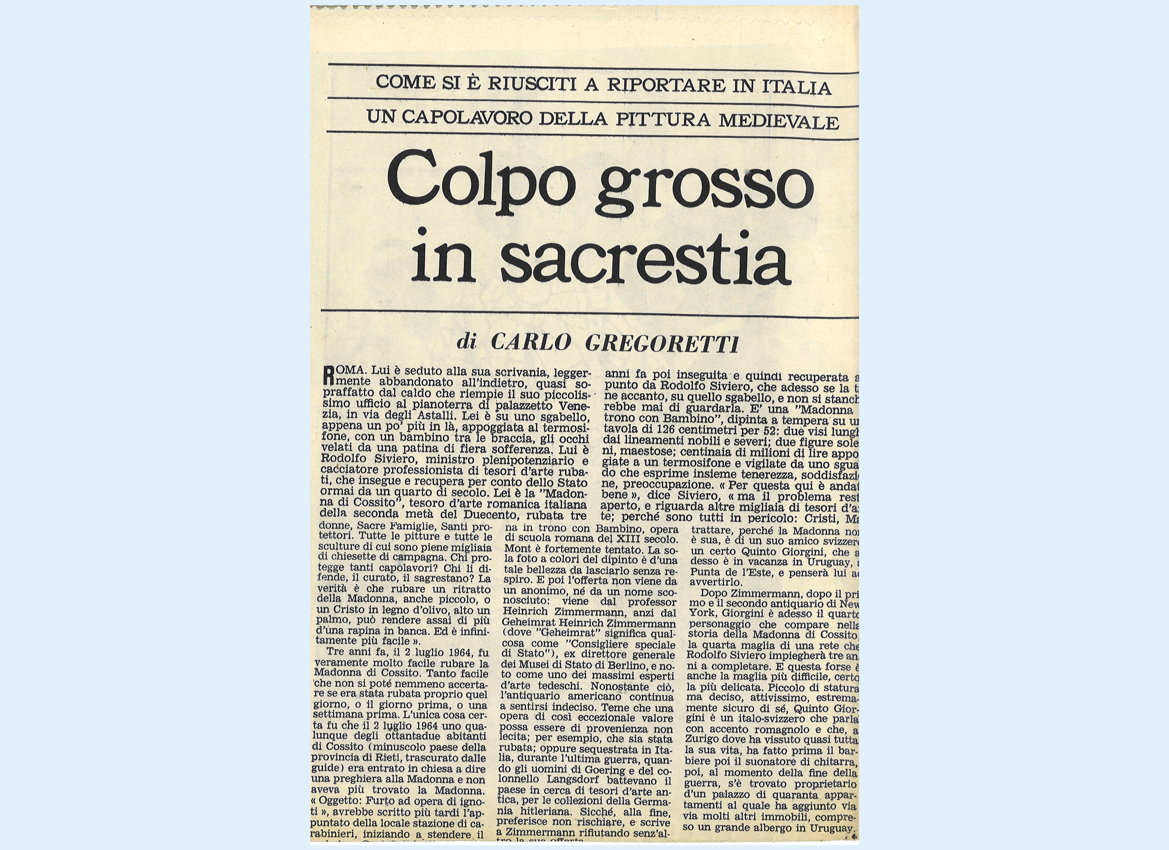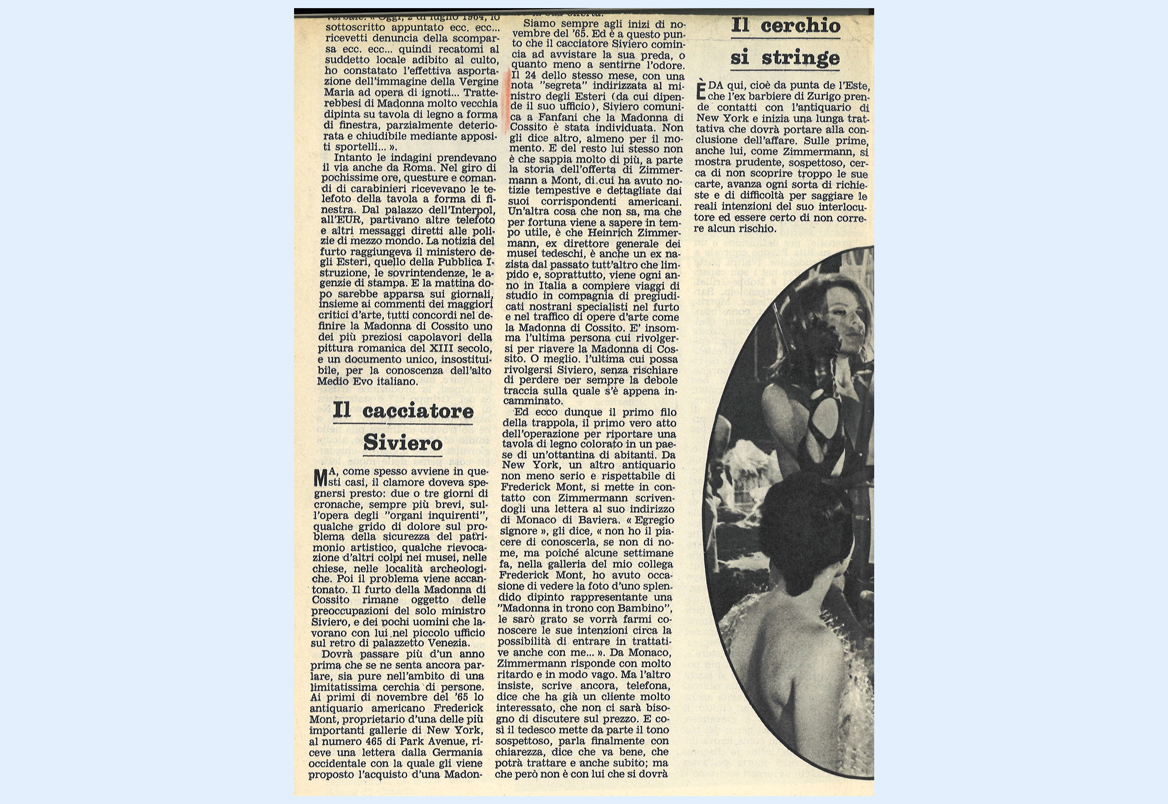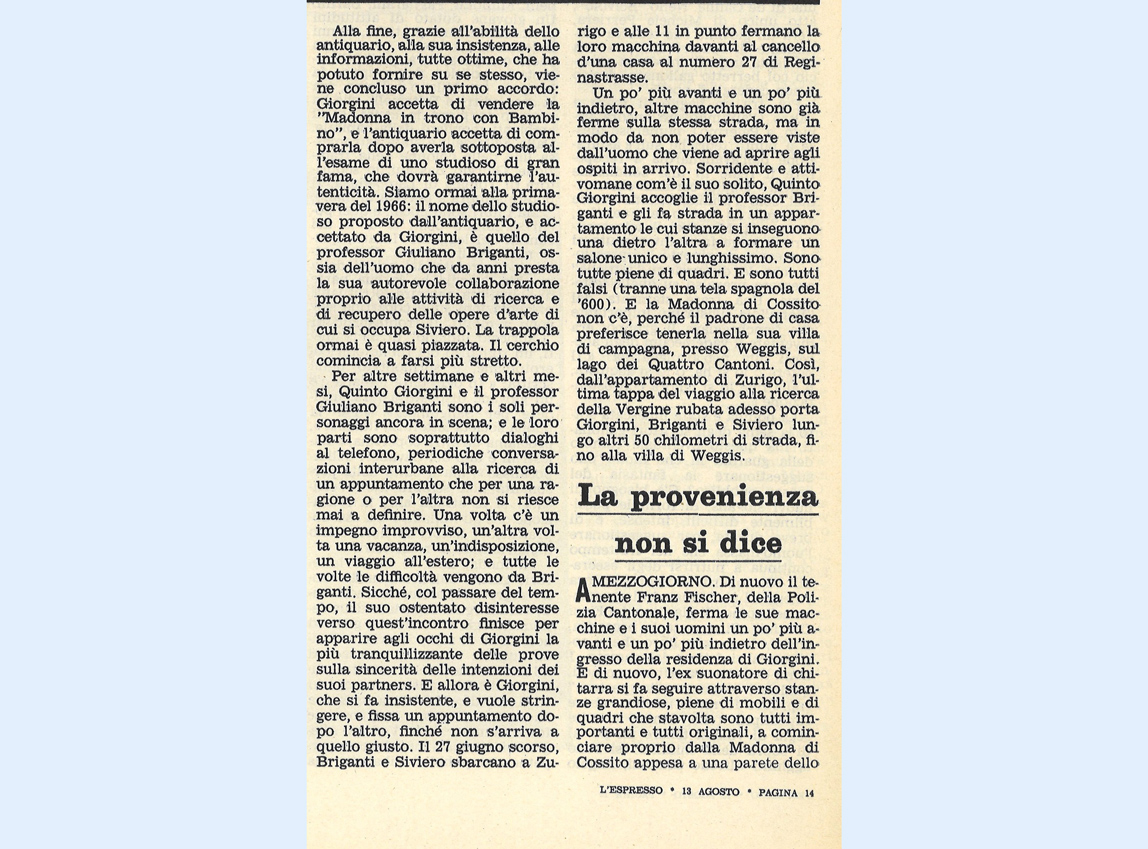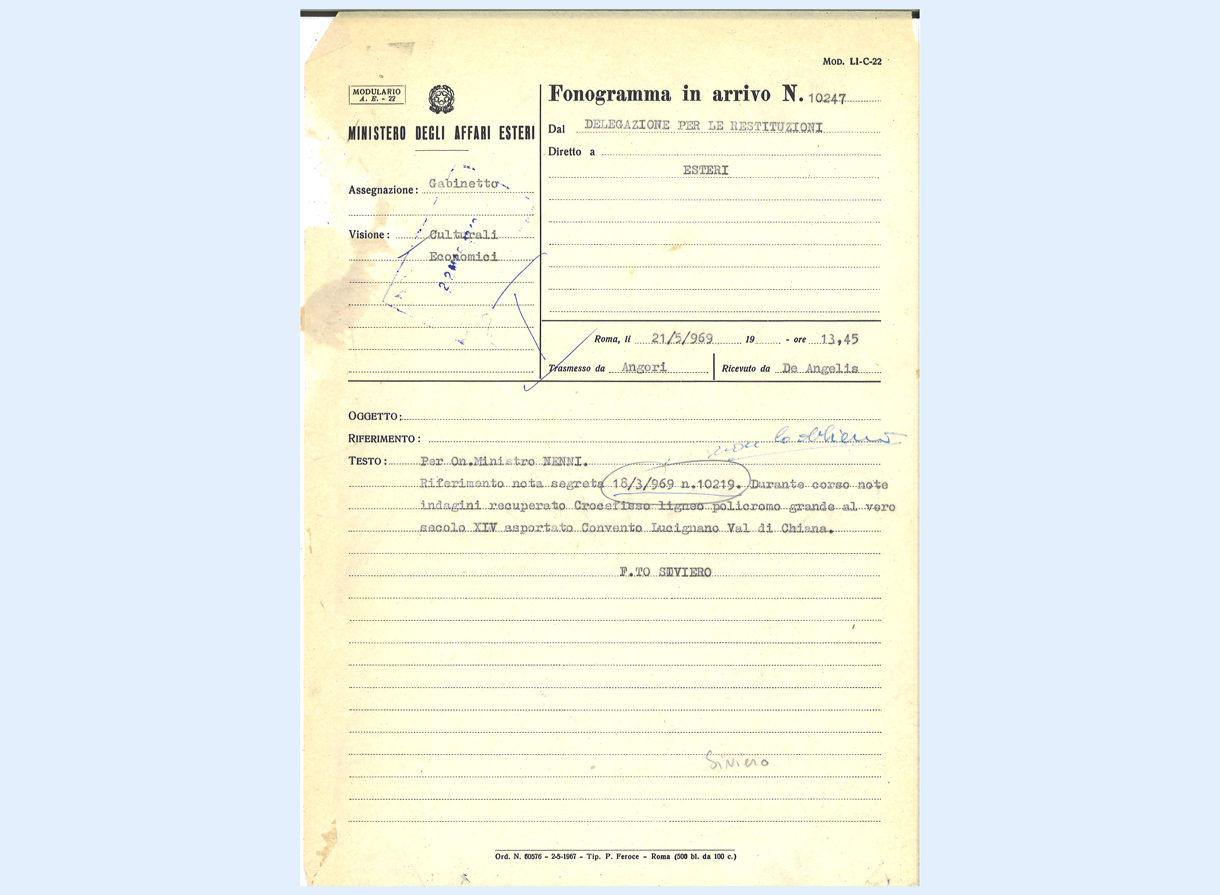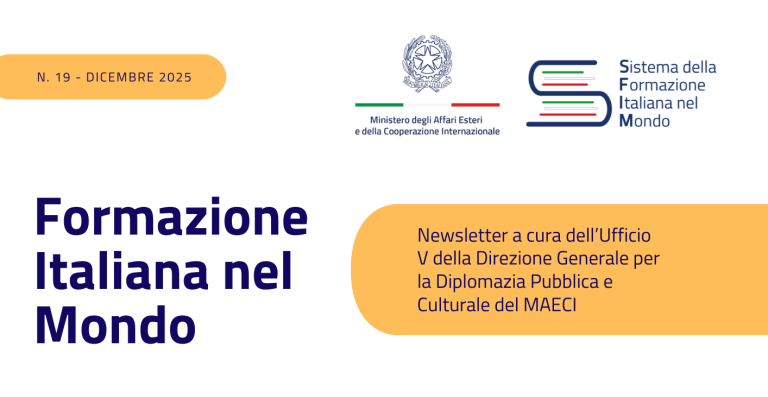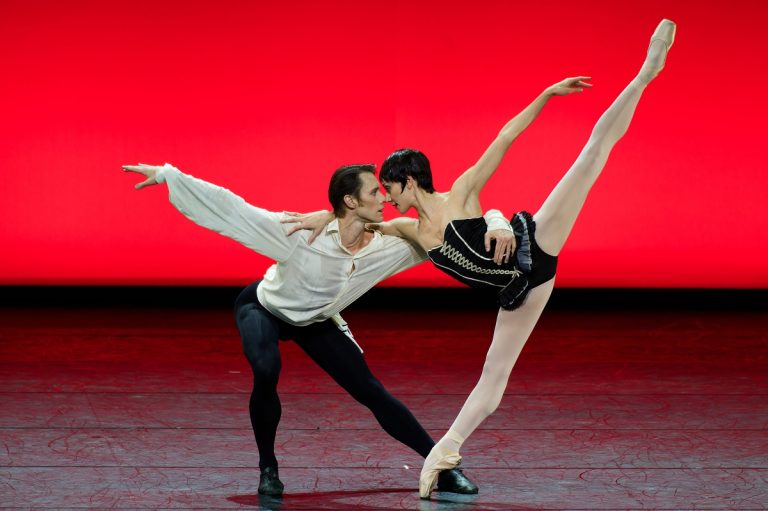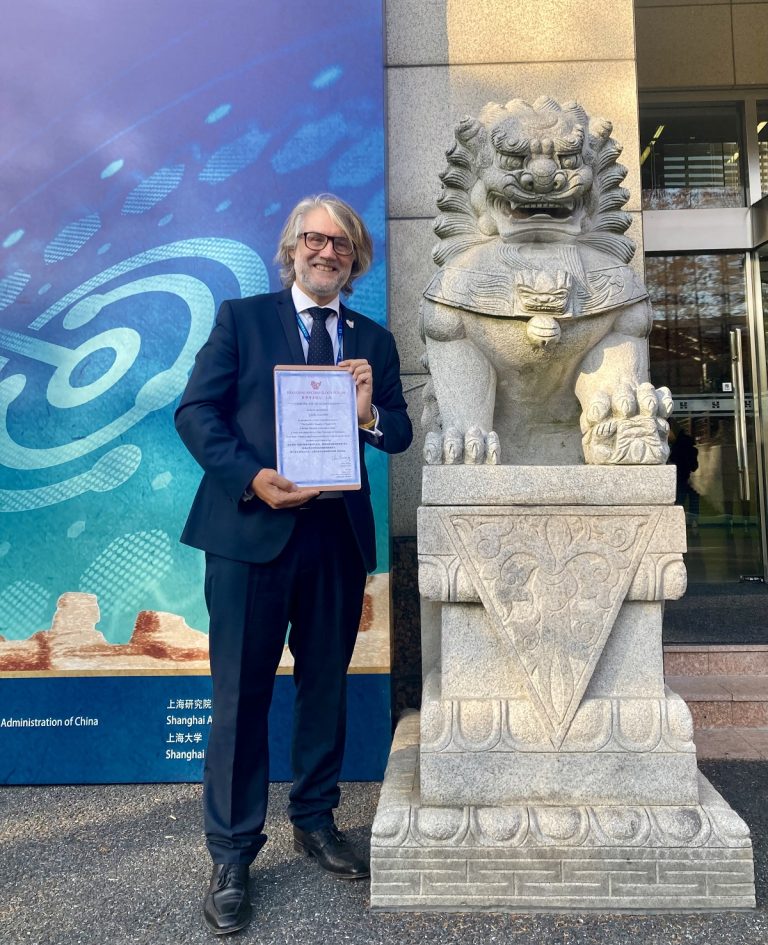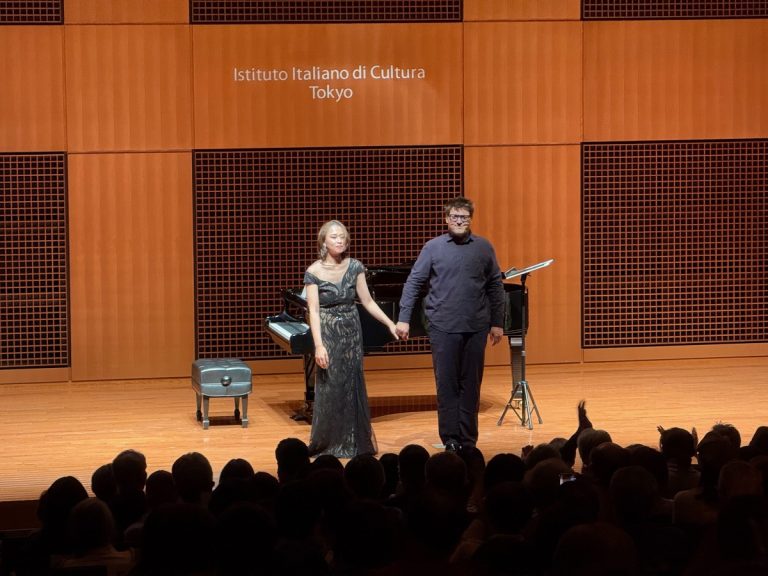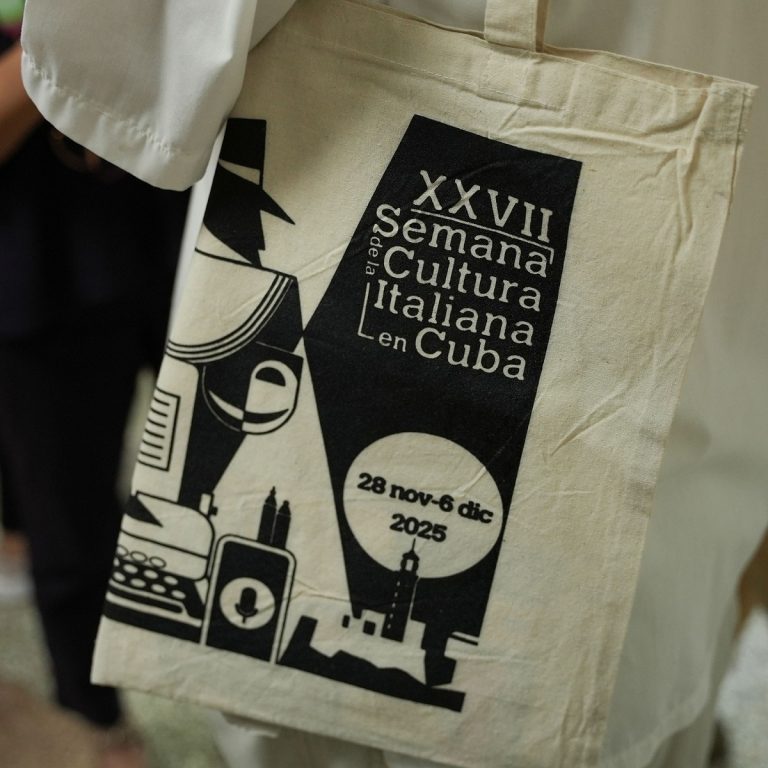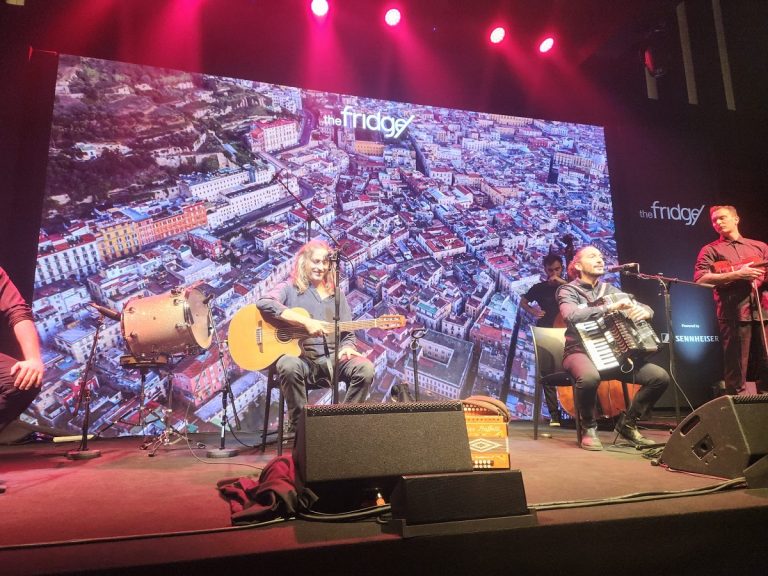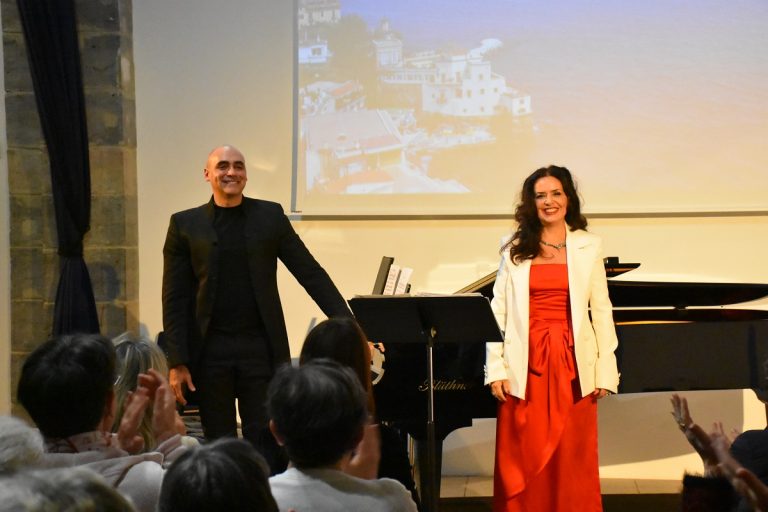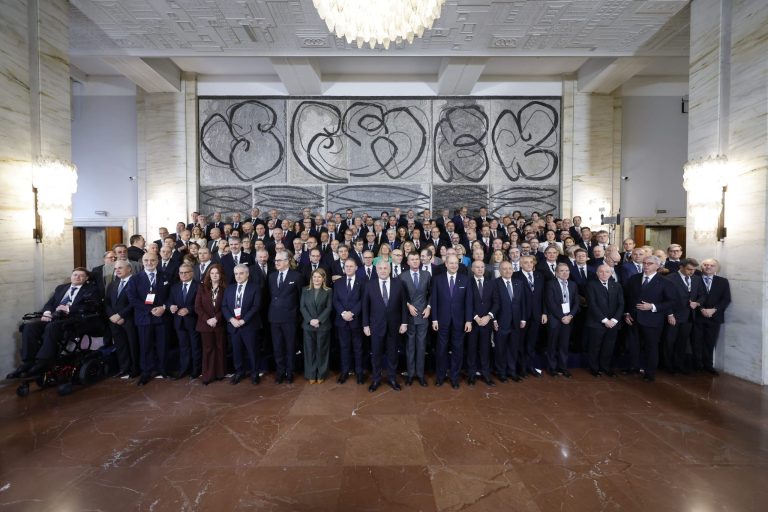Rodolfo Siviero, born in Guardistallo (Pisa) in 1911, was one of the key figures in the protection and recovery of Italy’s artistic heritage looted during the Second World War. A graduate in philosophy, he developed an early interest in art and, during the war, became an intelligence agent for the Italian government, tasked with monitoring Nazi plundering operations. After the war, Siviero devoted his life to tracing and bringing back to Italy priceless works of art stolen by German troops and occupying forces.
Following the De Gasperi–Adenauer Agreement of 1953, two national delegations — Italian and German — were established to oversee the restitution of artworks held in Allied depots in Germany, particularly at the Central Collecting Point in Munich, in accordance with Article 77 of the Peace Treaty. The German delegation was led by Ambassador Friedrich Janz, while Siviero was appointed head of the Italian “Delegation for Restitutions” within the Ministry of Foreign Affairs, holding the title of Minister Plenipotentiary.
High-level meetings between the two delegations took place in Bonn (October 1953), Perugia (January 1954), Munich (March 1954), and Baden-Baden (September 1954). On 16 December 1953, the first of the so-called Siviero–Janz Protocols was signed: forty masterpieces were returned to Italy. In April 1954, another significant group of artworks made its way back, and following the Baden-Baden talks, on 8 September 1954, a further 37 works were restituted by Germany to Italy.
Siviero’s office, based at Palazzo Venezia, continued for decades its vital work of recovering and returning Italy’s historical, artistic, and cultural heritage — not only works taken to Germany during the war, but also items stolen from museums, places of worship, and archaeological sites, trafficked by art traffickers and destined for private collections or foreign museums.
The Diplomatic Historical Archives of the Ministry of Foreign Affairs holds extensive correspondence related to the Delegation’s work under Siviero. Among the documents on display in this gallery is a handwritten letter from art historian Roberto Longhi — who, along with Giulio Carlo Argan, was part of the Ministry’s Restitution Commission — as well as a 1969 telegram from Siviero to then Minister of Foreign Affairs Pietro Nenni, reporting the recovery of an important artwork: a polychrome wooden crucifix stolen from the convent of Lucignano.
The collection of press clippings includes an article recounting the recovery of a medieval masterpiece, The Madonna of Cossito, stolen from a rural church by art traffickers, and another piece marking the creation of the Carabinieri’s special art protection unit, the Command for the Protection of Cultural Heritage (TPC). Founded in 1969, it was originally named the “Carabinieri Command of the Ministry of Public Education – Unit for the Protection of Artistic Heritage”.
Among the many treasures returned to Italy thanks to Siviero and his collaborators were the Discobolus by Myron, Masolino’s Madonna of Humility, and masterpieces from the museums of Naples such as Titian’s Danaë, which had been hidden at the Abbey of Montecassino during the war. Some of these works were taken by German forces in 1943 and transferred to Germany, after first being moved to the Vatican in anticipation of Allied attacks on Montecassino.
But Siviero was not solely focused on recovering stolen works — he was also a tireless advocate for public awareness of cultural heritage. He worked closely with Italian institutions to strengthen protection measures and created a detailed archive documenting the dispersion of artworks during the war. Today, his legacy lives on at the Casa Siviero Museum in Florence, his former home, now transformed into a centre dedicated to preserving the memory of his extraordinary mission.

